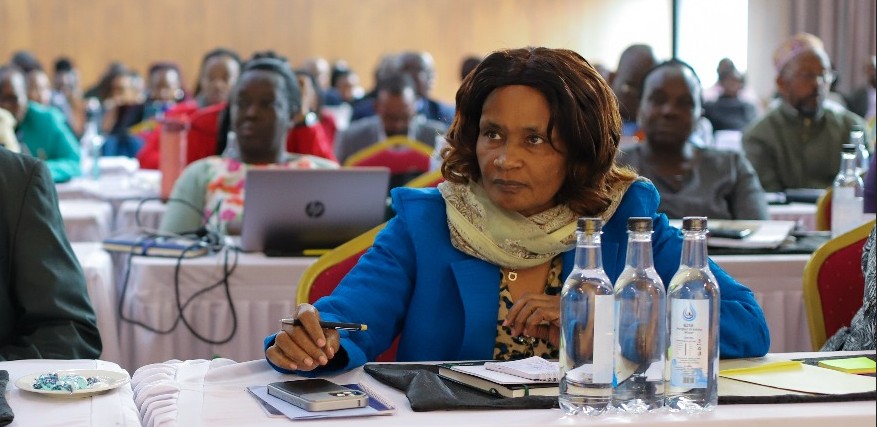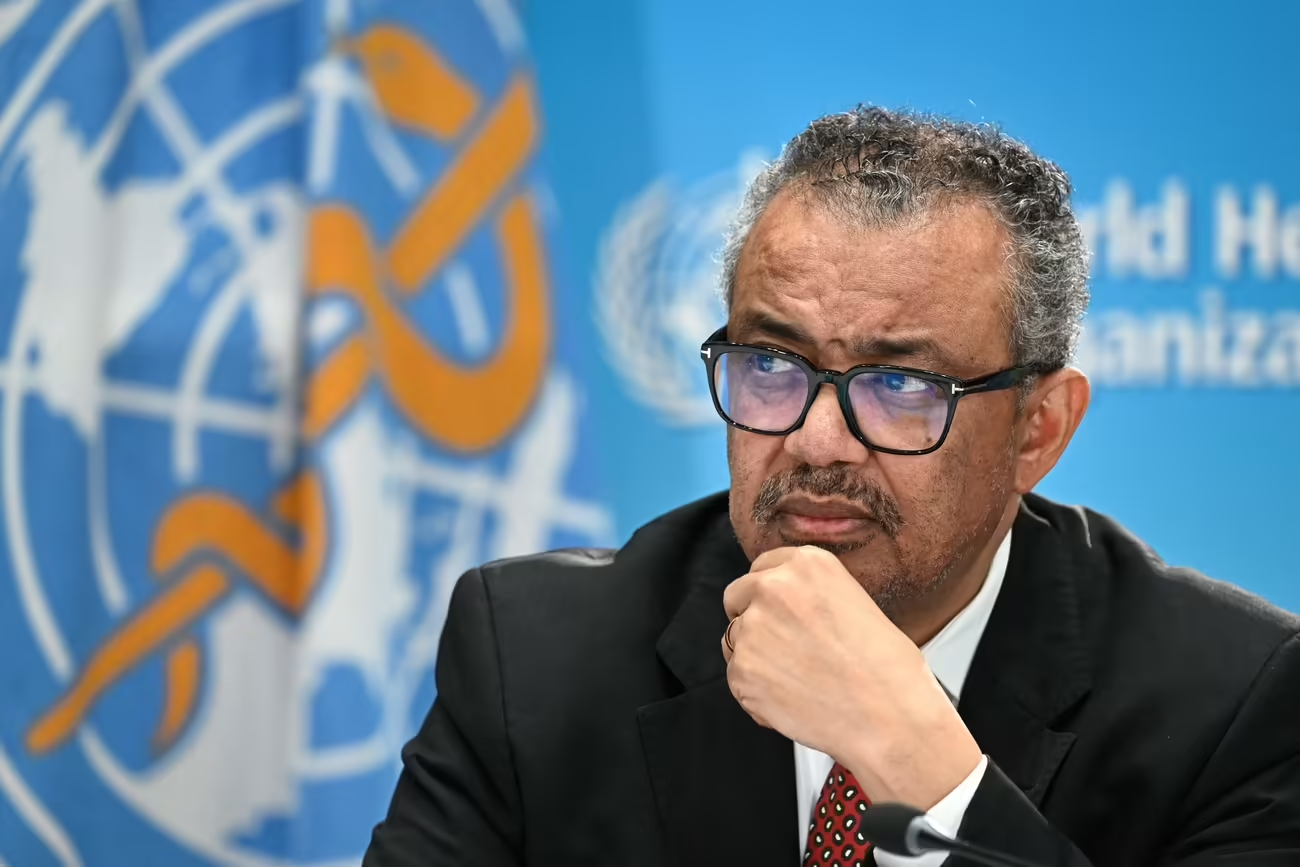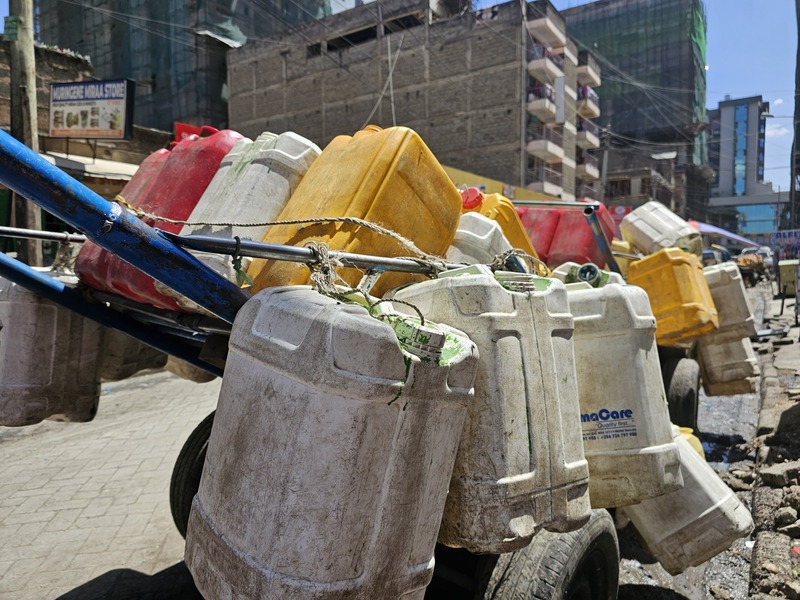Breeding grounds for danger: How improper waste management drives disease transmission
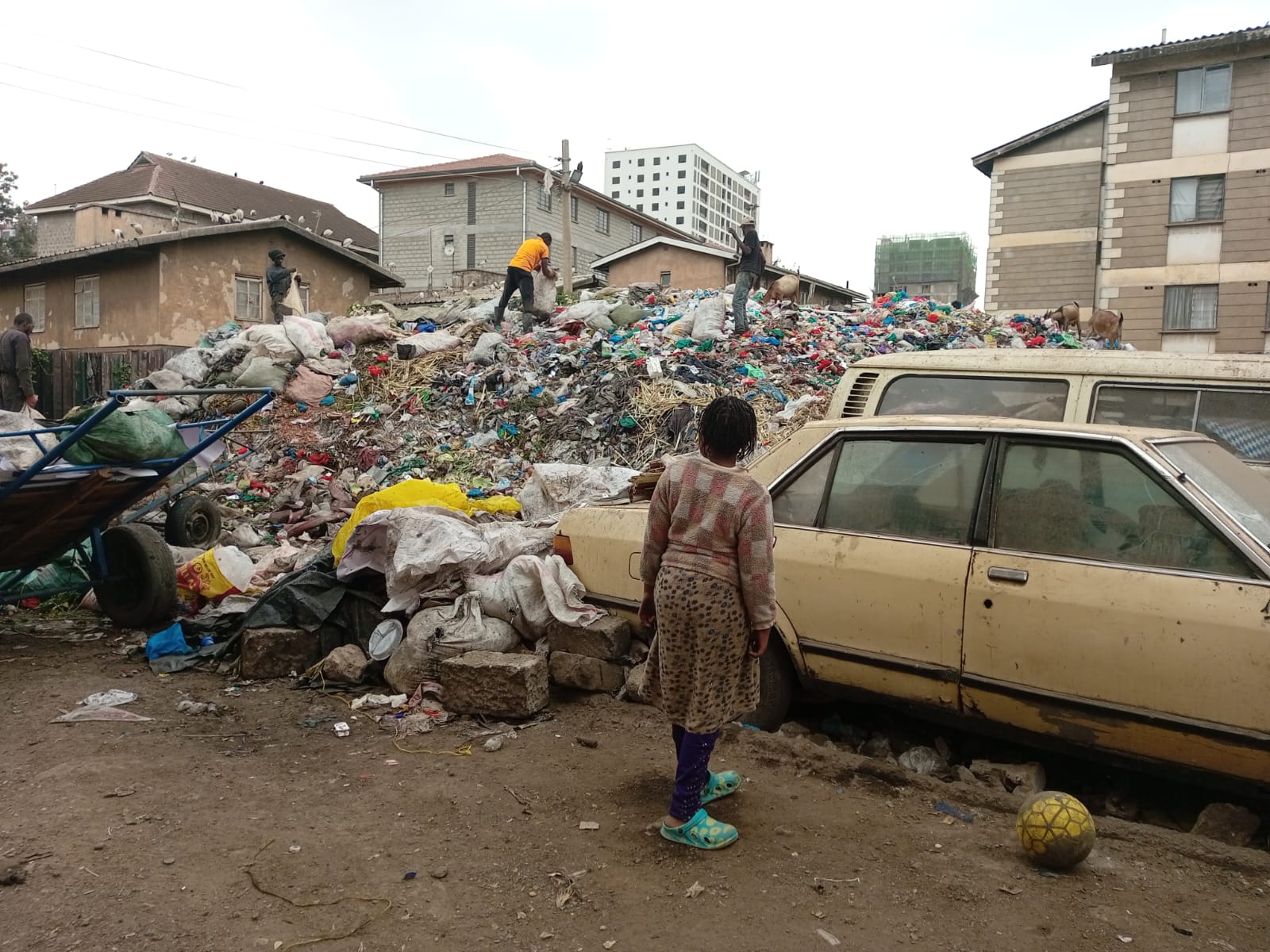
Behind her, a huge pile of garbage lies. It used to be a collection point. The ground is slick with mud and rotting waste. The air is heavy with the stench of decay and sewage. Yet this is where people live, where families cook meals and where babies take their first steps.
Sharon Njoki stands by the edge of the open dumping site in Highrise, Pumwani, her arms folded tightly across her chest. Around her, life continues as usual, children playing with laughter cutting through the air as they chase one another along narrow paths lined with rubbish.
They toss old plastic bottles like toys, their joy seemingly untouched by the filth surrounding them. But Njoki is in constant worry over the garbage.
More To Read
- White rice vs. Brown rice: Nutritionist weighs in on the health debate
- Ozempic and other weight-loss drugs linked to rare but serious eye conditions
- Mpox outbreak: What you need to know to stay safe
- Kenyan football fraternity in mourning as Bandari Youth star Daudi Zakaria dies at 20
- Extreme weather affects mental health: What vulnerable women in Kenya told us
- Paved road brings new life to Kamukunji’s Kitui village, residents push for street lights next
A mother of three, she watches her children play with contaminated water. With schools closed and no safe places for them to go, she has little choice but to watch and pray.
Behind her, a huge pile of garbage lies. It used to be a collection point. The ground is slick with mud and rotting waste. The air is heavy with the stench of decay and sewage. Yet this is where people live, where families cook meals and where babies take their first steps.
She remembers when things were different, when the lorries came on time to collect garbage, when the drains carried water away instead of spilling it back into their homes. But all that stopped.
“We know the risks of malaria and diarrhoea. But we don’t even know what else could come. And no one seems to care,” she says.
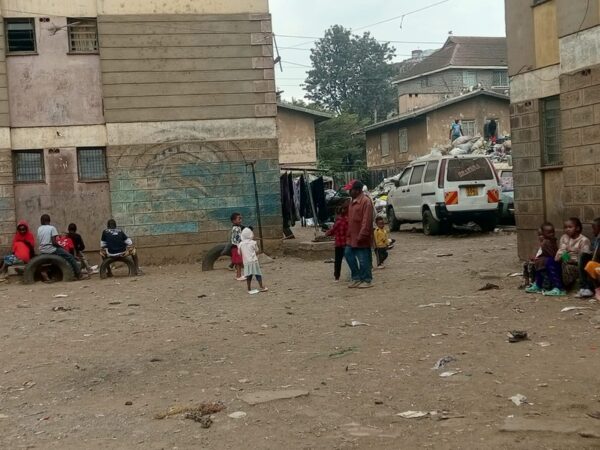 Children playing near a dumping site. (Charity Kilei)
Children playing near a dumping site. (Charity Kilei)
During the rains, the entire neighbourhood transforms. Water floods the narrow pathways, mixing with sewage and garbage, creeping into doorways and kitchens. Rats and mosquitoes become the order of the day.
Just a few metres from the dumpsite, women bend over pots of boiling food, swatting away flies while trying to make a living. In many parts of Nairobi, especially in informal settlements, this is the everyday reality.
“Mosquitoes are just part of life now; we burn coils every night. But it’s never enough.”
There used to be mosquito nets from the clinic, she recalls, something the government provided. However, that support has also decreased.
“We used to get nets. Now we use whatever we can,” she says. “But the children still fall sick—malaria, fever, coughing all the time. When it rains, it feels like everything comes undone.”
The water never drains properly. It stagnates in forgotten corners, seeps into homes, and becomes a breeding ground for mosquitoes.
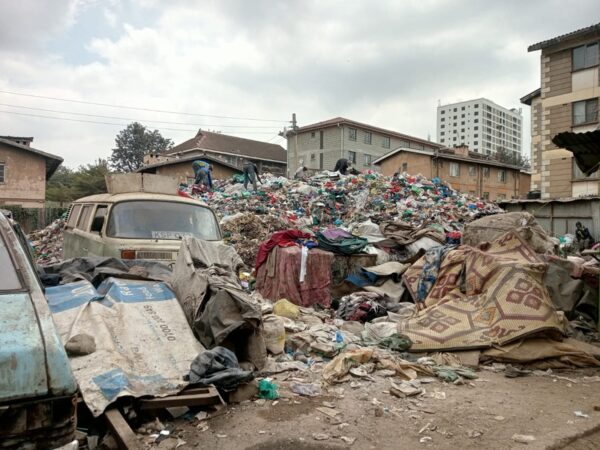 A mountain of trash in a residential area in Pumwani. (Charity Kilei)
A mountain of trash in a residential area in Pumwani. (Charity Kilei)
Public health threat
Rapid urbanisation and climate change have together created a serious public health threat in Nairobi, with mosquito-borne diseases such as malaria, dengue fever, chikungunya and cholera becoming increasingly common. While many still believe mosquitoes only bite at night, health experts warn that new, more aggressive species, such as Aedes aegypti, now bite during the day, increasing the risk of infection at all hours.
Although Nairobi has not traditionally been considered a malaria-prone region, poor sanitation, uncollected waste and blocked drainage systems have created the perfect conditions for outbreaks.
In addition to mosquito-borne illnesses, children are increasingly exposed to respiratory infections and diarrhoeal diseases. Diarrhoea remains one of the leading causes of death among children under five in Kenya.
Joel Odera, a member of the Rokongo Self-Help Group and a long-time resident of Pumwani, speaks with frustration as he surveys the worsening waste crisis in his neighbourhood. He says the community has done its part by paying monthly revenue of Sh15,000 to the county government, but in return, they have received broken promises.
“We’ve had a few garbage lorries come, but they only make one trip—sometimes none at all. They say the vehicles don’t have fuel. Other times, they just don’t show up,” Odera explains.
Once, there were formally contracted waste collectors who came regularly. However, this stopped, and the burden of managing the rubbish has once again fallen on the residents.
“In Pumwani, the trash is always there,” he says, shaking his head. “The collection points help, but without regular pick-ups, they turn into mini dumpsites. The county is failing us.”
Odera emphasises that people on the ground know exactly what is happening. “The rubbish keeps piling up. The trenches are full. The mosquitoes are everywhere. We’re at risk every day.”
He recalls the promises made by Governor Johnson Sakaja, including job creation and cleaner neighbourhoods. “Yes, we’ve seen some short-term youth employment programmes, but the trash is still here. The local government is failing us.”
“We’re not asking for much, just collect the waste. That’s all. Right now, we survive by God’s grace. But we are tired.”
In his neighbourhood, mosquito bites, stomach upsets, and diarrhoea are part of daily life. Illness is expected. Outbreaks of malaria and waterborne diseases are no longer seen as emergencies.
The garbage pile in this neighbourhood has remained for nearly three months, despite local Community-Based Organisations (CBOs) saying they are paying a monthly collection fee of Sh15,000 to the county. Nairobi County government officials contacted by the Eastleigh Voice for comment did not respond.
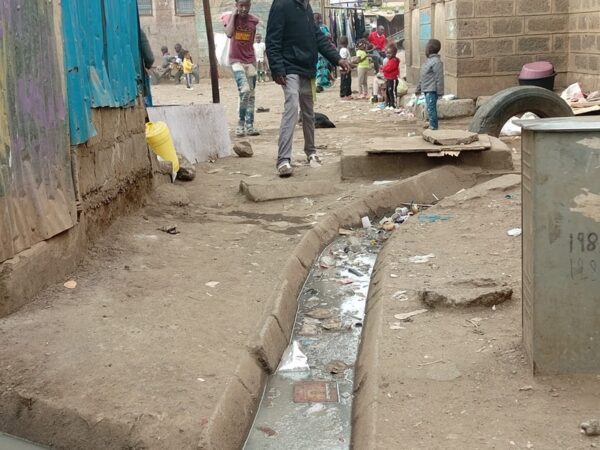 Children playing near a sewer line. (Charity Kilei)
Children playing near a sewer line. (Charity Kilei)
Malaria threat
Dr Esther Mwaura stresses that malaria remains a critical public health threat, especially for pregnant women and children under the age of five. These groups are highly vulnerable, not only to malaria but also to other mosquito-borne diseases such as dengue fever, as well as secondary complications like respiratory infections and diarrhoeal diseases. Their weakened or developing immune systems increase the likelihood of severe illness and even death if these conditions are not promptly treated.
Dr Mwaura explains that malaria is primarily spread through the bite of an infected female Anopheles mosquito, which transmits the Plasmodium parasite from one person to another. Similarly, dengue fever is spread by the Aedes aegypti mosquito, which thrives in urban areas and breeds in stagnant water found around homes.
“We are facing a dual threat from both malaria and dengue, and poor waste disposal is fuelling both epidemics,” Dr Mwaura warns. “When garbage piles up and water collects in our surroundings, it becomes a breeding ground for mosquitoes that spread deadly diseases.”
She explains that while both malaria and dengue share a common mode of transmission, their effects can be very different. Malaria can cause recurring fevers, chills, and in severe cases, coma or death. Dengue fever often presents with high fever, intense body aches, joint pain, rash, and, in severe cases, internal bleeding and organ damage.
To combat the rising cases of both diseases, Dr Mwaura urges individuals, communities and authorities to adopt a comprehensive and proactive approach to public health, which includes hygiene, early health checks for pregnant women and children, and the use of mosquito nets, repellents and indoor spraying. She also highlights the role of community education in reducing mosquito-borne illnesses such as malaria and dengue.
Malaria remains a major public health challenge in Kenya, with approximately five million cases and over 12,000 deaths reported annually. The disease disproportionately affects children under five and pregnant women, particularly in regions such as Western Kenya, where incidence rates are significantly higher.
Dengue and chikungunya fevers are emerging as growing concerns, with recent outbreaks reported in coastal regions and increasingly in urban areas across the country.
Top Stories Today





